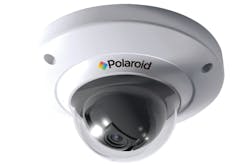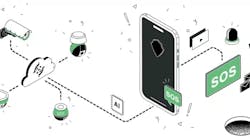Beginning next month, consumer electronics maker Polaroid will make its debut in the video surveillance market with a complete line of product offerings including analog and IP cameras, as well as NVRs, DVRs, hybrid video recorders and video management software.
According to Polaroid Executive Vice President Nathan Needel, who formerly served as vice president of sales at Infinova, the company wanted to wait until June of this year to make its’ official launch in the industry in order to build up an adequate amount of inventory. The company plans to sell its solutions through what Needel characterized as “true” security systems integrator partners in the channel.
“Our regional integrators are highly-trained and have a protected territory,” he said. “For example, say the market is Chicago; it is our intention to only have a handful of integrators in that market. In this way, the integrator can go out to his customers and not have to worry about a smaller company that doesn’t have all of the overhead of the office, phones, vehicles, and technician training, etc., and having to compete with them.”
Needel said that the company currently has more than 40 integrators lined up across the U.S. to be resellers of their products, but they have the capacity to support 100. Polaroid intentionally limited the number of integrators to ensure that they are properly trained to install and support their products. “We want integrators that have real technicians with the proper trucks, tools and office to represent Polaroid as we expect to be represented,” he said.
Needel added that Polaroid’s products are tailored to fits the needs of end users in enterprise applications. “Low-end and consumer is not what we’re doing. What our sales effort focuses on is enterprise environments – airports, seaports, universities, K-12, and multi-location retail,” he explained. “For the efficiency of the sales organization, we want to work with end users that have a small number of decision makers who control dozens or hundreds of locations.”
Despite the fragmentation that currently exists in the video surveillance market and the number of competitors they will be going up against, Needel said Polaroid believes there will soon be a shift in the industry that will work to their benefit. “We see the fragmentation in the market reducing. There are a lot of players that have accepted (venture capital) money and they just haven’t been able to grow to the expectation of the people financing the operation,” he said.
In addition, Needel also believes that the Polaroid brand will resonate well in the marketplace. “Polaroid, as an instant camera company, we feel is a perfect fit and a great story to use the company name,” Needel said. “The end user, we believe will trust and embrace a Polaroid product. We have a 75-year history and we’re associated with instant solutions. The brand name is trusted and respected, so when a sales person goes out to speak to an end user, they can walk with confidence knowing that the end user will know and trust the brand.”
What will differentiate Polaroid from its competitors, according to Needel, is the complete solution that they will be able to provide and also the way in which they view the camera, VMS and analytics. Needel said they are currently working with one of the world’s largest hotel chains to help them alleviate one of their biggest operational issues.
“They have a corporate policy where they don’t want more than seven people standing in line at the front desk of their hotel and people at the front desk are instructed to call for help in there are too many people waiting in line,” said Needel. “They’ve had trouble enforcing this policy because people at the front desk are too busy doing what they are supposed to be doing focusing on the customer that is right in front of them. In these hotels, there are already cameras at the front desk and we’ve developed a solution where when there are more than seven people in line, the camera will send that information to a video analytic and, in turn, the video management software will alert the manager on duty with what they call their ‘hot potato’ phone and send a video clip and an alert to that phone so they can send more personnel to the front desk. We look at the camera as a sensor and we want to understand what the end user’s problems and challenges are.”


